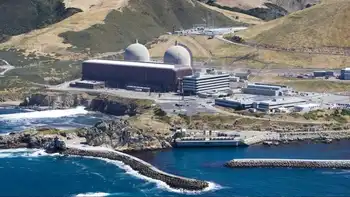Some utility customers get the green rate
By McClatchy Tribune News
Substation Relay Protection Training
Our customized live online or in‑person group training can be delivered to your staff at your location.

- Live Online
- 12 hours Instructor-led
- Group Training Available
In fact, she volunteered to. Joppich has supported Light & Power's wind turbine off M-72 west of town since 1996 by opting to pay a higher "green rate" for the renewable energy.
"Although we're people of modest circumstances, we felt we'd rather put extra money into that," she said. "I think of all my grandchildren, my great-grandchildren, what's going to be here? We should be stewards of our land."
The special rate program was a cutting edge concept in the 1990s and helped Light & Power dive into renewable energy by building the windmill. But as the green movement catches on and the city-owned utility moves to broaden its renewable energy sources, board members say it's time for all customers to bear the cost.
"We're looking at investing in other green projects," said L&P board Chairman John Welch, "and as we start to expand more of our generation in that area, it just makes sense to me that everybody should be participating in that."
The wind turbine in Leelanau County's Elmwood Township was the largest operating in the nation when built in 1996. Light & Power was the first utility in the county to offer a green rate, said marketing manager Jim Cooper.
"Twelve years ago this was innovative and kind of something we wouldn't have done without the commitment of certain individuals with the green rate," Welch said.
"Now that the cost associated with generating through alternative sources is coming down an more in line with some of the traditional energy sources, it makes sense to eliminate the green rate, in my perspective."
Ten commercial businesses and 73 houses chip in extra cash to support the renewable energy source, Cooper said. The waiting list has 41 names, including at least five businesses.
The number of participants is capped according to the amount of electricity the turbine produces each year; it averages 800,000 kilowatt hours. Most green rate customers pay nearly 1.7 cents more per kilowatt, which adds up to about $8 each month for homes that use the average amount of 500 kilowatts.
Large commercial businesses pay slightly more.
"The wind turbine still costs more than the coal plant, so this helps balance out the cost," Cooper said, but added that the expenses are "getting closer all the time."
Steve Smiley has worked for L&P as a renewable energy and energy efficiency consultant for more than 17 years. He proposed the green rate plan as a way to "break the ice" and get the utility involved in wind power generation. "I agree that all the renewable energy needs to be rate-based, put in with everything else and just become part of the public infrastructure so we stop discriminating against it," he said.
"When they put in a coal plant, they just make everyone pay their own share."
Smiley estimates customers would see only a couple cents added to their bills if everyone shared the cost of the turbine's wind energy. The utility's 2007 customer survey showed that 82 percent of respondents would support building another windmill in the area. Of those, 39 percent would be willing to pay $5 more per month for wind energy, 33 percent would pay $10 more, and 10 percent did not want to pay extra.
Light & Power is considering investing $120 million in two coal-powered generation plants and a wind farm. The wind farm could include up to 15 turbines on 400 acres off U.S. 31 south of Charlevoix.
Coal plants in Rogers City and Lansing might also burn more eco-friendly biomass, or wood waste. Customers could face rate increases up to 31 percent over the next five years to fund the projects, although the board doesn't expect rates to climb that high.
"We as a county and as a utility, we are moving more and more towards green commitment," board member Linda Johnson said.











